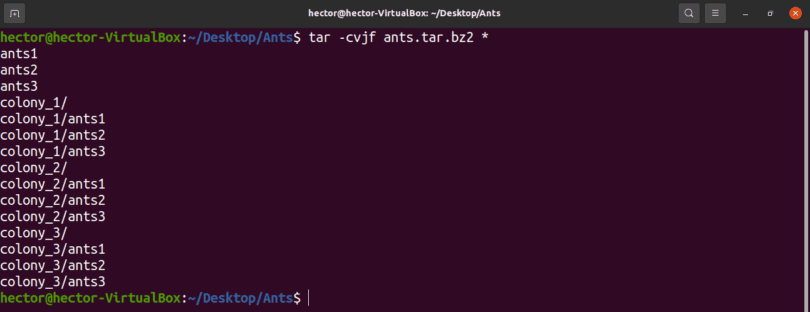

When extracting a compressed tar.bz2 file by reading the archive from standard input (usually through piping), you must specify the decompression option. md (Markdown files), you would use: tar -xf 2 -wildcards '*.md' Extracting tar.bz2 File from stdin # The pattern must be quoted to prevent the shell from interpreting it.įor example, to extract only the files whose names end in. The -wildcards option allows you to extract files from a tar.bz2 file based on a wildcard pattern. Tar: Exiting with failure status due to previous errors If you try to extract a file that doesn’t exist in the archive, an error message similar to the following will be shown: tar -xf 2 README tar: README: Not found in archive When extracting files, you must provide their exact names including the path, as printed when the -list ( -t) option is used.Įxtracting one or more directories from an archive is the same as extracting multiple files: tar -xf 2 dir1 dir2 To extract a specific file(s) from a tar.bz2 file, append a space-separated list of file names to be extracted after the archive name: tar -xf 2 file1 file2 Use the -directory ( -C) to extract archive files in a specific directory:įor example, to extract the archive contents to the /home/linuxize/files directory, you would type: tar -xf 2 -C /home/linuxize/files Extracting Specific Files from a tar.bz2 File # tar -xvf 2īy default, tar will extract the archive contents in the current working directory This option tells tar to display the names of the files being extracted on the terminal. Windows users will need a tool named 7zipįor more verbose output use the -v option. To extract (unzip) a tar.bz2 file simply right-click the file you want to extract and select “Extract”. If you are a Desktop user and the command-line is not your thing you can use your File manager. The same command can be used to extract tar archives compressed with other algorithms such as.

The tar command auto-detects compression type and extracts the archive. To extract a tar.bz2 file, use the -extract ( -x) option and specify the archive file name after the -f option: tar -xf 2 Most Linux distributions and macOS comes with the tar utility pre-installed by default.
UNTAR TAR XZ HOW TO
In this tutorial, we will explain how to extract (or unzip) tar.bz2 and tbz2 archives using the tar command. By convention, the name of a tar archive compressed with bzip2 ends with either. It supports a vast range of compression programs such as gzip, bzip2, lzip, lzma, lzop, xz and compress.īzip2 is one of the most popular algorithms for compressing tar files.

On major Linux systems like Ubuntu, Debian, Fedora, we can use the below steps for installing the XZ Utils package.Ī.The tar command allows you to create and extract tar archives.
UNTAR TAR XZ MAC
The XZ list of supported platforms contains a long list of distributions, including FreeBSD, Windows, Mac OS, Linux, etc. We have performed this guide on Ubuntu 20.04. In this guide, we will see how we can extract a tar.xz file in Linux. In the same way, if a terminal is used as standard input, XZ will not read the compressed data. If the standard output is a terminal, XZ will not write the compressed data. If no files are passed, or the file is ‘-,’ standard input is used for reading, and the output is written to standard output. The compression and decompression operations are carried out as per the operation mode of XZ. lzma files and the raw compressed streams that do not have container format headers. For normal files, XZ Utils gives 30% more compression than gzip and 15% smaller output when compared to bzip2. XZ is a command-line tool like the gzip and bzip used for lossless data compression. Although largely modified, LZMA SDK is the basis of the crux of XZ Utils compression code.
UNTAR TAR XZ SOFTWARE
The XZ Utils data compression software is one of those essential subprojects. Although the distro is no longer alive, some of its subprojects are still in existence. The Tukaani project was initially started as a Slackware-based OS. The XZ command is a part of XZ Utils data compression software developed by the Tukaani project. Compressing a file reduces its size without omitting any of its information hence it is more convenient to transmit it.


 0 kommentar(er)
0 kommentar(er)
